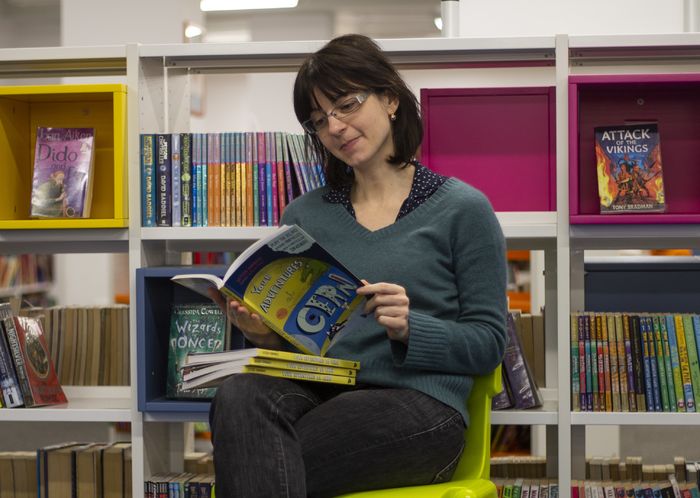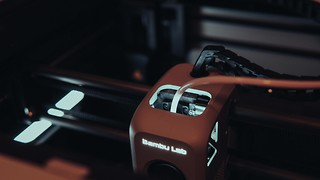Getting Hands On with science
Miss the days of vinegar volcanoes and other whacky reactions? Dio Sangwon Shin investigates the society that’s taking a hands on approach to science engagement, and recreating those experiences for future generations

For many Cambridge Natscis, endless pipetting sessions late into the afternoon are nothing to be excited about, especially when it comes with a winding lab report.
Yet, studies show that hands-on experiences are crucial in science learning. Aside from laboratory skills, the process of enquiry fosters passion for science, independent thinking, and a more nuanced understanding of the scientific method—not just for university students, but for all ages.
Cambridge Hands On Science (CHaOS), a student-run science society, aims to harness this power of hands-on science to inspire young pupils to pursue science in the future. Since 1998, CHaOS student volunteers have been touring the country to visit schools and public events, showcasing science experiments and demonstrations. In 25 years, they’ve grown to more than 150 active members, with volunteers coming from a broad range of triposes.
To learn more about them, Varsity interviewed CHaOS co-presidents Peter Methley and Asmita Niyogi. Both Peter and Asmita have been involved in the society since they were freshers, taking up several different roles before becoming co-presidents this year.
As co-presidents, they organise society events varying in scale and scope – from the 2-month long annual “CHaOS summer roadshow” across the country, to demonstrations in various local Cambridge festivals, like the annual “Crash Bang Squelch” in the Zoology Department.
Their 2022 summer roadshow saw them reach roughly 8000 people with their demonstrations. They visited ten schools, a couple jamborees and more events besides. Peter indicates the roadshow fosters a real community atmosphere among the CHaOS volunteers: “After demonstrating we will work together to cook dinner, some people might go on errands to do shopping or washing [...] the day usually ends with some fun activities, with games like ‘contact’ or ‘werewolves’.”
Regardless of the event, their primary objective is constant: to showcase how exciting science can be through experiments that, though not “necessarily conforming to the curriculum, are fun and interesting.”

Their approach also helps tackle the barriers that can stop youngsters from seeing science as a viable career; no child is left out of participating, or feeling involved. Their experiments are all based on common household items - no expensive science kits needed; and by getting the kids to draw a “scientist”, they can discuss and break down some of the stereotypes that stop children from pursuing the subject further.
CHaOS’s experiments range from ‘classics’, such as creating batteries from fruit or a lemon juice and bicarb mini explosion, to more unusual experiments like creating “your own sunset” model, or ‘water rockets’. The demonstrations are designed to be flexible: Volunteers try to “tailor” them to each audience to allow everyone to “get something out of it”—from curious 3-year olds to seasoned university professors. “Everyone enjoys them,” says Asmita.
CHaOS’s approach to science engagement makes them popular with schools across England. Yet despite their mission to visit as many schools as possible, limited time means not every school can play host to CHaOS. Each year, the careful decision of which schools to visit falls upon the committee members like Peter and Asmita. Their school visits perhaps give them a unique insight into the education system.
“There’s obviously a range in the resources that different schools have,” says Peter. The Institute for Fiscal Studies estimate the funding gap between state and independent schools is roughly £6,500 per student per annum. Not all state schools can set aside the resources needed for regular hands-on science activities, so while the British science curriculum has moved to include more of this kind of learning in recent decades, not all pupils will receive equal access to these changes.
CHaOS looks at POLAR – a measure of higher-education progression in a given region - to maximise the impact they can have. Ormiston Denes Academy, a state secondary school in Suffolk lies in a region with a POLAR quintile of 1 (the lowest rate of participation). CHaOS has visited the school twice in the past 5 years – an unusual occurrence, but very welcome. The school proudly includes CHaOS’s visits on their annual newsletters, praising the group: “they [the students] had a great time doing the experiments.”
For students in schools like Ormiston Denes, a CHaOS visit may present a rare opportunity to experience experimental science. “The kids love it, and the level of excitement and interest students have in our experiments doesn’t necessarily correlate with the level of science education in the rest of the school,” says Peter.
However, Peter and Asmita stress that their visits are not meant to be filling in for the school curriculum: “The things that we do aren’t really what is taught in the curriculum…we just pick experiments that are interesting for the kids,” Asmita remarks.
CHaOS visits will not dramatically improve a student’s understanding of science or their laboratory skills. A few hours of experiments, no matter how well designed, cannot overturn or replace years worth of formal science education. That remains the responsibility of schools and teachers.
But visits by CHaOS – and organisations like it – might just be the spark of motivation, inspiration, or excitement every student needs to keep pursuing science.
 News / Uni offers students £55k in payouts31 October 2025
News / Uni offers students £55k in payouts31 October 2025 News / Uni error forces deeper spending cuts31 October 2025
News / Uni error forces deeper spending cuts31 October 2025 News / Students launch women’s society excluding trans women31 October 2025
News / Students launch women’s society excluding trans women31 October 2025 News / Students allowed to use AI, says new uni guidance31 October 2025
News / Students allowed to use AI, says new uni guidance31 October 2025 News / College rowing captains narrowly vote to exclude trans women31 October 2025
News / College rowing captains narrowly vote to exclude trans women31 October 2025










